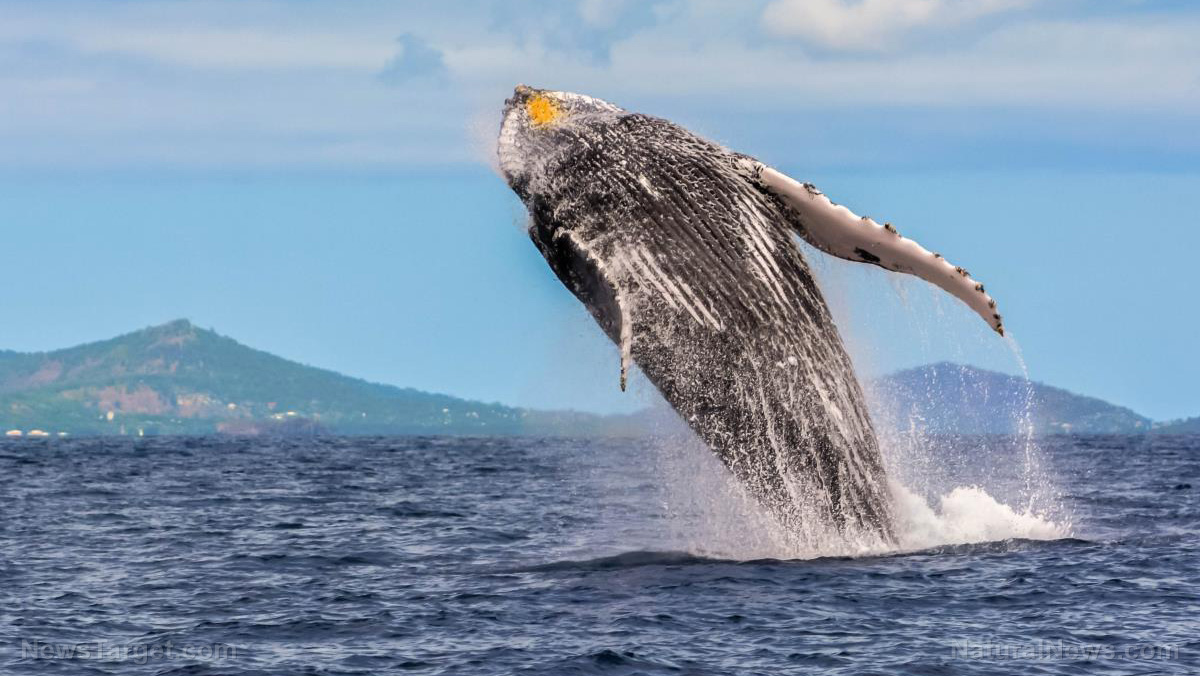A dead supercontinent is partly responsible for the ocean sinking into the Earth’s mantle, explain researchers
02/01/2020 / By Michael Alexander

Every day, hundreds of millions of gallons of water drain from the oceans into the Earth’s mantle, and geologists think that a dead supercontinent may be to blame.
Dubbed the “deep water cycle” or the “geologic water cycle,” this phenomenon occurs when water gets soaked up by minerals within the earth’s mantle through a process called subduction. As the water gets closer and closer to the Earth’s core, it heats up, to the point where a large quantity of it gets expelled back into the ocean floor through undersea explosions and hydrothermal vents.
Earlier research suggests that the phenomenon is just one of many that determine the rise and fall of ocean levels.
In a study published in the journal Geochemistry, Geophysics and Geosystems, a team led by geologists from the University of Oslo detailed their findings surrounding the phenomenon – including historical evidence of sea levels fluctuating by more than 656 feet alongside so-called super continental cycles every 300 to 500 million years.
Krister Karlsen, lead author of the study and a researcher at UiO’s Centre for Earth Evolution and Dynamics, said this phenomenon can be traced back to one major geological event: the splitting of the supercontinent Pangaea 200 million years ago.
“The breakup of Pangaea was associated with a time of very rapid tectonic plate subduction,” Karlsen said in an interview with LiveScience, adding that when Pangaea broke up, the resulting deep water cycle led to a drop of up to 430 feet in both Panthalassa and Tethys, the two main oceans at the time.
Karlsen said their team built on previous studies of the Earth’s tectonic plates over the last 230 million years to model the approximate rates in which oceanic water entered and left the Earth’s mantle.
Among their findings, Karlsen said, was the discovery that the faster the water-logged mineral plate fell into Earth, the farther it could subduct before the mantle’s high heat evaporated its water content. According to the team’s calculations, this rapid subduction imbalanced the deep water cycle to the point that it triggered millions of years of extreme water loss.
Lose a continent, gain seven oceans
Experts, however, say this “water loss” is not as negative as it might sound, as it was something that led to the creation of today’s oceans. Popular Mechanics expanded on this, noting in an article that the resulting lower water levels from Pangaea’s split actually made the planet more habitable.
According to geologic records, when the supercontinent Pangaea started to split, new oceans appeared, starting with the North Atlantic, which appeared roughly 175 million years ago, followed by the South Atlantic 145 million years ago. The split also closed off the Tethys Ocean and triggered the formation of the Arctic Ocean from what used to be the Sinus Borealis. The Pacific followed suit, during the Mesozoic era, formed from the remains of the Panthalassa. Continued tectonic movement meanwhile, led to the formation of the “youngest” of today’s oceans: the Indian and the Antarctic.
Deep ocean cycle no match for sea level spikes – researcher
Despite the continued “draining” of the ocean’s waters into the mantle, however, Karlsen said it can’t really address issues such as continued sea level spikes, noting that even as massive amounts of water sink into the mantle, actual sea levels can spike and plummet by hundreds of feet on much shorter timescales. (Related: Rising global sea levels may actually be beneficial for coral reef islands in the long-run: Study.)
“While the deep water cycle can effectively change sea level over hundreds of millions to billions of years, climate change can change the sea level in zero to 100 years,” Karlsen said. “For comparison, the present-day sea level rise associated with climate change is about 0.1 inches (3.2 millimeters) a year. The sea-level drop associated with the deepwater cycle is about 1/10,000 of that.”
For more stories related to oceans and the environment, head over to Environ.news today.
Sources include:
Tagged Under: continents, Earth Changes, Ecology, environment, geology, Oceans, pangaea, planet Earth, research, science and technology, sea level, seas, water level, weird science



















